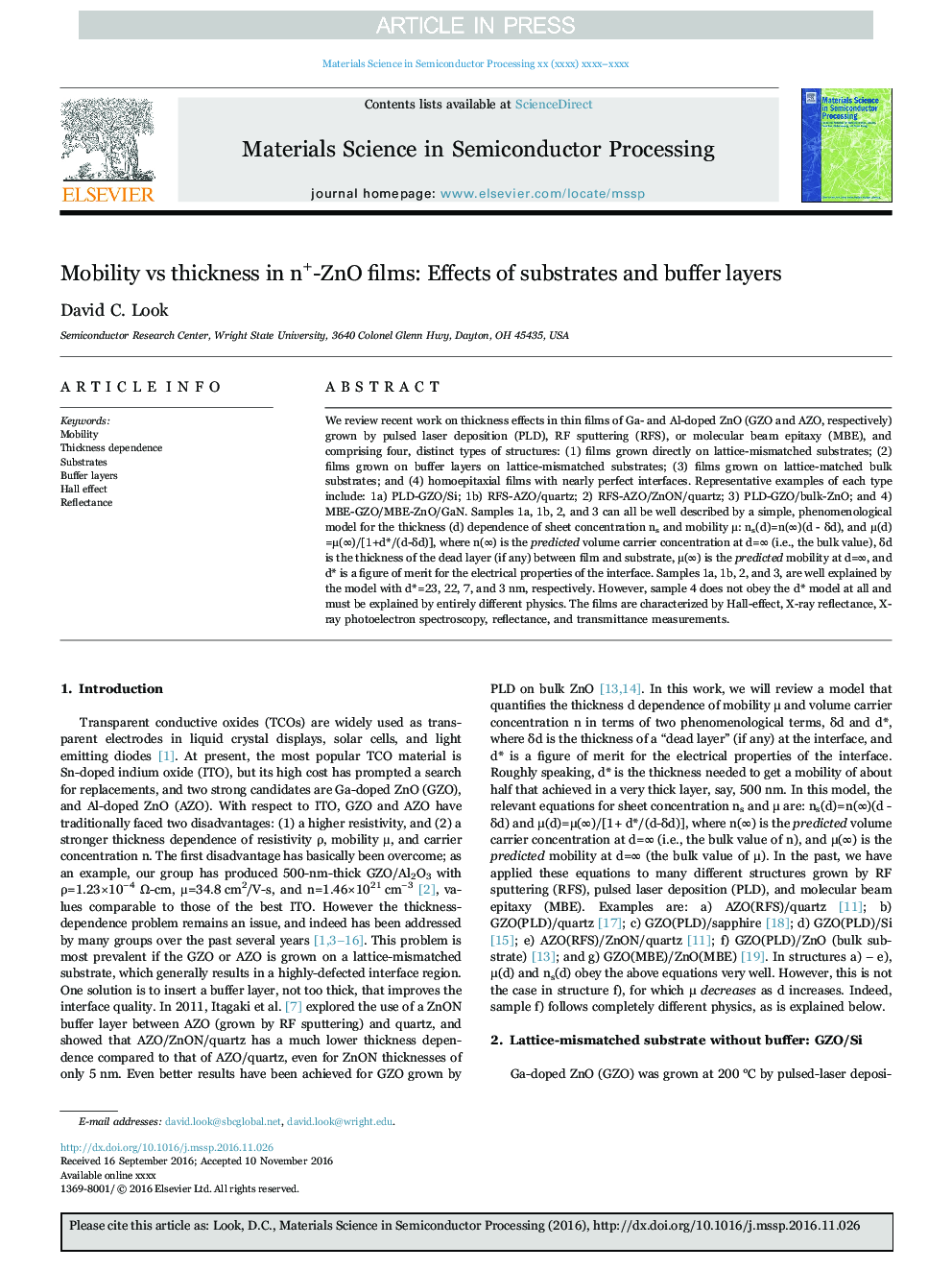| Article ID | Journal | Published Year | Pages | File Type |
|---|---|---|---|---|
| 5005989 | Materials Science in Semiconductor Processing | 2017 | 7 Pages |
Abstract
We review recent work on thickness effects in thin films of Ga- and Al-doped ZnO (GZO and AZO, respectively) grown by pulsed laser deposition (PLD), RF sputtering (RFS), or molecular beam epitaxy (MBE), and comprising four, distinct types of structures: (1) films grown directly on lattice-mismatched substrates; (2) films grown on buffer layers on lattice-mismatched substrates; (3) films grown on lattice-matched bulk substrates; and (4) homoepitaxial films with nearly perfect interfaces. Representative examples of each type include: 1a) PLD-GZO/Si; 1b) RFS-AZO/quartz; 2) RFS-AZO/ZnON/quartz; 3) PLD-GZO/bulk-ZnO; and 4) MBE-GZO/MBE-ZnO/GaN. Samples 1a, 1b, 2, and 3 can all be well described by a simple, phenomenological model for the thickness (d) dependence of sheet concentration ns and mobility μ: ns(d)=n(â)(d - δd), and μ(d)=μ(â)/[1+d*/(d-δd)], where n(â) is the predicted volume carrier concentration at d=â (i.e., the bulk value), δd is the thickness of the dead layer (if any) between film and substrate, μ(â) is the predicted mobility at d=â, and d* is a figure of merit for the electrical properties of the interface. Samples 1a, 1b, 2, and 3, are well explained by the model with d*=23, 22, 7, and 3 nm, respectively. However, sample 4 does not obey the d* model at all and must be explained by entirely different physics. The films are characterized by Hall-effect, X-ray reflectance, X-ray photoelectron spectroscopy, reflectance, and transmittance measurements.
Related Topics
Physical Sciences and Engineering
Engineering
Electrical and Electronic Engineering
Authors
David C. Look,
